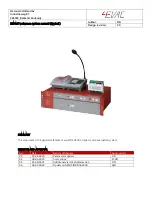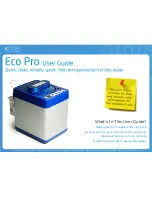
215651
273
Revision B
Chapter 9:
Reference
The reference section provides additional, support information on topics such as torque specifications, the requirements
for lifting equipment, unit measurement conversions, and terminology definitions. Consult this section as needed.
9.1
Torque Specifications
The following tables provide torque values for various bolts, cap screws, and hydraulic fittings. Use these values only when
no other torque value has been specified in a given procedure.
•
Tighten all bolts to the torque values specified in the charts below, unless you are directed otherwise in this manual.
•
Replace removed hardware with hardware of the same strength and grade.
•
Use the torque value tables as a guide when periodically checking the tightness of bolts.
•
Understand the torque categories for bolts and cap screws by reading the markings on their heads.
Jam nuts
Jam nuts require less torque than nuts used for other purposes. When applying torque to finished jam nuts, multiply the
torque applied to regular nuts by 0.65 to obtain the modified torque value.
Self-tapping screws
Use the standard torque values when installing self-tapping screws. Do
NOT
install self-tapping screws on structural or
otherwise critical joints.
9.1.1
SAE Bolt Torque Specifications
The torque values provided in the following SAE bolt torque tables apply to hardware installed dry; that is, hardware with
no grease, oil, or threadlocker on the threads or heads. Do
NOT
grease or oil bolts or cap screws unless directed to do so in
this manual.
$
%
&
'
Figure 9.1: Bolt Grades
A - Nominal Size
B - SAE-8
C - SAE-5
D - SAE-2
Table 9.1 SAE Grade 5 Bolt and Grade 5 Free Spinning Nut
Nominal
Size (A)
Torque (Nm)
Torque (lbf·ft) (*lbf·in)
Min.
Max.
Min.
Max.
1/4-20
11.9
13.2
*106
*117
5/16-18
24.6
27.1
*218
*241
3/8-16
44
48
32
36
7/16-14
70
77
52
57
1/2-13
106
118
79
87
9/16-12
153
170
114
126
5/8-11
212
234
157
173
3/4-10
380
420
281
311
7/8-9
606
669
449
496
1-8
825
912
611
676
















































